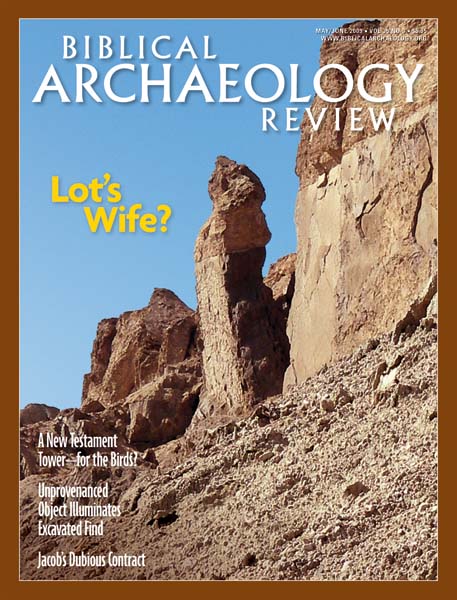Biblical Archaeology Review, May/June 2009

Features
Surely one of the most exciting moments in the life of a Biblical archaeologist is finding something that seems to illuminate the Biblical text. The recent discovery of the Siloam Pool where, according to John 9:1–7, Jesus cured a man who had been blind from birth, is certainly one prime example. Cheek-by-jowl to the […]
Abraham famously argued with God about his decision to destroy Sodom and Gomorrah: “Will you indeed sweep away the righteous with the wicked?” the patriarch asks the Master of the Universe. “Suppose there are fifty righteous within the city; will you then sweep away the place and not forgive it for the fifty righteous […]
In Isaiah 22 the prophet rails in God’s name against the excesses of the officials in King Hezekiah’s palace. Among those he singles out is Shebna, the steward who is “in charge of the house [palace]” (Isaiah 22:15): What have you here and whom have you here, That you have hewn out a tomb […]
A legal obligation is not the same as a moral obligation. There is a formality in the law, especially the law of contracts, that sets it apart from the dictates of justice. The patriarchal narratives in Genesis derive much of their dramatic force—not to mention instructive power—from this tension between legal and moral […]
Henry Baker Tristram (1822–1906) was an English clergyman, Biblical scholar, world traveler and ornithologist.
